Taiwan-based Makers Go High-end HID to Achieve Product Segmentation
2008/04/07 | By Steve ChuangTaiwanese manufacturers are hoping that their outstanding production and R&D capabilities will help them differentiate their high-profile, high-quality high-intensity discharge (HID) headlights from the products of their rivals.
Taiwan's HID xenon lamps are twice as bright as traditional halogen headlights and last longer, with a lifespan of more than 2,000 hours. With a wide range of color temperatures (3,500K to 12,000K), they also offer advantages over light-emitting diode (LED) lamps, which have high prices and need better heat-dissipation solutions.
HID was originally touted for its use as lighting for sports events, but is now recognized as one of the best lighting sources ever. Already, it occupies a 37% to 40% share of the auto headlamp market.
HID Ballast
A critical component of HID lamps is the ballast, and one of the foremost makers of this item is the Arcmen Optoelectronics Corp. Founded in the northern Taiwan county of Taipei in 2004 to design ballasts and supply HID conversion kits, the company now has more than 30 workers who turn out as many as 10,000 sets per month.
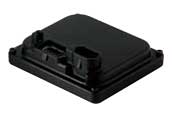
Around 85% of Arcmen's products are suitable for European cars, including such luxury brands as Mercedes-Benz and BMW, and the company focuses almost exclusively on exports-mainly to Russia, Turkey, Italy, and Spain.
The company's president, Sam Chen, insists that Arcmen supply only high-end HID headlamps and kits, with 80% of the bulbs used being procured from Philips to assure durability. "With HID bulbs from Philips," he says, "we're quite confident of the quality of our headlights. Also, we enhance their added value by making our own HID housings and bases of PP (polypropylene), PE (polyethylene), galvanized iron, and even mixtures of plastic and metal."
Chen goes on to say, "Our ballasts are designed mainly with analog circuits, which can effectively reduce the effects of environmental conditions and resist electromagnetic waves. In addition, the analog circuit design allows a ballast to drive HID headlights with the incredibly short reaction time of just 300 milliseconds."
The ballasts are tailored to suit the engine control units (ECUs) in most European cars, and have passed the environmental tests required for E-Mark certification. "Since many large carmakers use a different automatic headlight control systems to boost safety," Chen comments, "the designing of ballasts and HID lamps for different systems and ECUs is an important experience for us. It also forces us to keep upgrading our products and R&D capabilities."
Backed by an integrated HID-lamp supply chain and a skilled R&D team, and fully confident in the future of HID lamps, Arcmen plans to develop them for other applications, such as greenhouses, where a high degree of brightness is needed. The company will soon also introduce more HID lamps and headlights, according to the president.
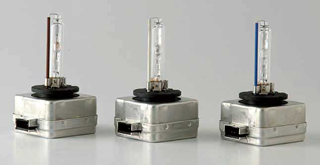
Concentration on Bulbs
The Gigalumen Technology Corp., set up in the northern Taiwan county of Hsinchu in 2002 to manufacture ultra-high performance (UHP) bulbs, has concentrated on the development of HID bulbs for more than five years.
Established by a group of professional engineers from the government-backed Industrial Technology Research Institute, Gigalumen claims to have the advantage over most of its rivals in R&D capability and know-how. It is one of the few Taiwanese companies that can mass-produce HID auto headlamps in-house.
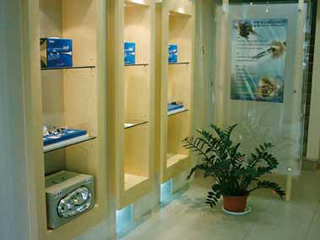
Senior manager Ben Huang stresses that despite the huge cost, Gigalumen constantly upgrades its production equipment and uses rigid control measures to assure top quality. These measures include tests of luminescence, correlated color temperature, hot re-strike, voltage, and lifespan.
Gigalumen's HID bulbs bear E-Mark (E11) certification and, since last December, approval by the Economic Commission for Europe (ECE)-only one of seven HID bulb makers to achieve that distinction. "Those seven are the world's most famous makers of HID bulbs," Huang notes. "This approval encourages us a lot, since it means that our products are proven; but it's just a beginning, and we have to compete against those other manufacturers."
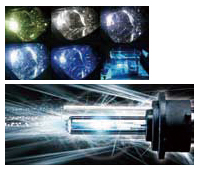
ECE standards demand very precise specifications and extremely stable electrodes, which, Huang comments, "means that we have to inspect an electric arc created across two electrodes in a small tube of just over four square millimeters to make sure that each HID bulb has the right focal point so that its beam doesn't diffuse. This task requires skilled engineers and highly precise testing machines-and that is one of our advantages."
Gigalumen is currently able to turn out 1,000 HID bulbs, for use in either cars or motorcycles, every eight hours. Its efforts to procure ECE approval have made it well known to major headlight brands, and it has built up solid cooperative ties with the academic sector for the development of high-end, innovative HID headlights.
Lamp Modules
Another producer in the line, Giantlight, has 30 years of manufacturing experience and now markets HID conversion kits under its own brand. The Taichung-headquartered company offers a wide range of auto lamps including headlights, fog lamps, rear lamps, and related accessories, as well as conversion kits, for cars and motorcycles. Most of its production is on an original equipment manufacturing (OEM) basis, with some original brand manufacturing (OBM) being done as well.
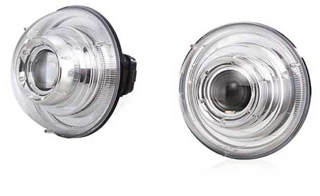
To assure stable quality, the company uses bulbs and ballasts from Philips in nearly all of its HID headlights and conversion kits. Its HID headlights are certified by ECE as well as SAE (Society of Automotive Engineers) and DOT (Department of Transportation) of the United States; in addition, its two plants, which occupy a total area of 33,000 square meters and employ more than 60 workers, have won ISO 9001:2000 certification.
Giantlight's president, Dany Chen, says that his company specializes in developing HID headlight modules and housings of aluminum alloy and plastic. "Around 70% of our finished HID conversion kits are now exported to Europe, the U.S., and Japan," he reports, "and the rest go to the domestic aftermarket. We are, in fact, one of the foremost developers of HID headlights in Taiwan."
To make sure that its headlights meet all the necessary rules in foreign countries, Giantlight has set up a lab to develop improved lenses that will provide better light distribution. Besides bringing the products into conformity with regulations, this effort has also reduced the size of the headlamps from 15cm to 13cm.
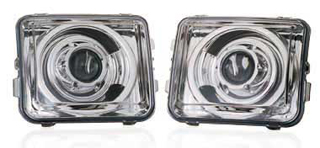
Another Giantlight innovation is a bi-xenon HID lamp module that allows switching from low to high beam through a change of the lens, a design that is patented in North America, Taiwan, and China. "We're different from other HID headlight vendors," Chen says, "because we place a strong emphasis on the improvement of housings. This has helped us earn a good reputation among foreign buyers."
Also, Chen continues, "we offer flexibility in our production; we can provide any kind of customized auto lamps, including LED lamps, daytime running lights (DRLs), LED fog lamps, and HID lamps. And rapid delivery is another one of our advantages."




